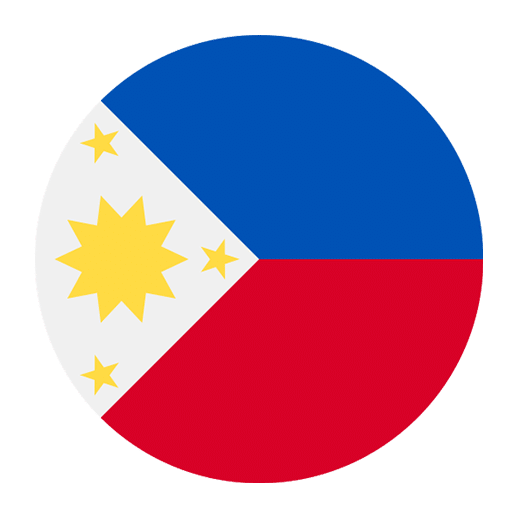The Philippines is a country known for its vibrant culture, warm hospitality, and, most notably, its festive spirit. Throughout the year, the archipelago is alive with various festivals (locally known as “fiestas”) that showcase its rich traditions, diverse heritage, and the joyful nature of its people. For language learners, these events provide an excellent opportunity to immerse oneself in Filipino culture and learn the language in a lively and engaging context. In this article, we will explore some of the most celebrated Filipino festivals, along with essential phrases and vocabulary that can help you navigate these colorful events.
Sinulog Festival
Held every January in Cebu City, the Sinulog Festival is one of the most famous and grandest festivals in the Philippines. It celebrates the Santo Niño (Child Jesus) and is characterized by a grand parade, street dancing, and religious processions.
Vocabulary and Phrases:
– Festival – Pista
– Dance – Sayaw
– Parade – Parada
– Santo Niño – Santo Niño
– Street – Kalye
– Float – Karosa
Useful Phrases:
– “Anong oras magsisimula ang parada?” (What time does the parade start?)
– “Pwede po bang sumali sa sayawan?” (Can I join the dance?)
– “Saan po ang pinakamagandang lugar para manood ng parada?” (Where is the best place to watch the parade?)
Ati-Atihan Festival
Celebrated in Kalibo, Aklan, every January, the Ati-Atihan Festival is known as the “Mother of All Philippine Festivals.” It features participants in elaborate costumes and black body paint, mimicking the indigenous Ati people.
Vocabulary and Phrases:
– Indigenous – Katutubo
– Costume – Kasuotan
– Paint – Pintura
– Drums – Tambol
– Tradition – Tradisyon
Useful Phrases:
– “Ano po ang ibig sabihin ng Ati-Atihan?” (What does Ati-Atihan mean?)
– “Saan po makakabili ng tradisyonal na kasuotan?” (Where can I buy traditional costumes?)
– “Pwede po bang kumuha ng litrato?” (Can I take a photo?)
Panagbenga Festival
Held every February in Baguio City, the Panagbenga Festival, also known as the Flower Festival, celebrates the blooming season with flower parades, float competitions, and street dancing.
Vocabulary and Phrases:
– Flower – Bulaklak
– Bloom – Pamumulaklak
– Float – Karosa
– Competition – Kumpetisyon
– Season – Panahon
Useful Phrases:
– “Anong bulaklak po ang ginagamit sa mga karosa?” (What flowers are used in the floats?)
– “Kailan po magaganap ang kumpetisyon ng mga karosa?” (When will the float competition take place?)
– “Pwede po bang bumili ng mga bulaklak dito?” (Can I buy flowers here?)
Pahiyas Festival
The Pahiyas Festival, celebrated every May in Lucban, Quezon, is a vibrant event where locals decorate their homes with colorful rice wafers (kiping) and agricultural produce to thank San Isidro Labrador for a bountiful harvest.
Vocabulary and Phrases:
– Harvest – Ani
– Decoration – Palamuti
– Rice wafer – Kiping
– Bountiful – Masagana
– Farmer – Magsasaka
Useful Phrases:
– “Anong oras po magsisimula ang parada?” (What time will the parade start?)
– “Ano po ang gamit ng kiping?” (What is kiping used for?)
– “Saan po makakabili ng mga lokal na produkto?” (Where can I buy local products?)
Moriones Festival
This festival is held during Holy Week on the island of Marinduque. The Moriones Festival features men and women in costumes and masks replicating Roman soldiers, reenacting the story of Longinus.
Vocabulary and Phrases:
– Holy Week – Semana Santa
– Roman soldier – Romanong sundalo
– Mask – Maskara
– Reenactment – Pagsasadula
– Costume – Kasuotan
Useful Phrases:
– “Ano po ang kwento ni Longinus?” (What is the story of Longinus?)
– “Pwede po bang makilahok sa pagsasadula?” (Can I participate in the reenactment?)
– “Kailan po magsisimula ang parada ng mga Moriones?” (When will the Moriones parade start?)
Kadayawan Festival
Celebrated every August in Davao City, the Kadayawan Festival is a week-long celebration of life, culture, and bountiful harvest. It features street dancing, floral float parades, and various cultural showcases.
Vocabulary and Phrases:
– Life – Buhay
– Culture – Kultura
– Bountiful – Masagana
– Street dancing – Sayawan sa kalye
– Floral float – Karosang bulaklak
Useful Phrases:
– “Ano po ang ibig sabihin ng Kadayawan?” (What does Kadayawan mean?)
– “Saan po gaganapin ang sayawan sa kalye?” (Where will the street dancing take place?)
– “Pwede po bang makita ang mga karosang bulaklak?” (Can I see the floral floats?)
MassKara Festival
Held every October in Bacolod City, the MassKara Festival is known for its smiling masks, elaborate costumes, and street dance competitions. It was originally conceived to uplift the spirits of the people during a time of crisis.
Vocabulary and Phrases:
– Mask – Maskara
– Smile – Ngiti
– Costume – Kasuotan
– Crisis – Krisis
– Spirit – Diwa
Useful Phrases:
– “Bakit po nagsusuot ng maskara?” (Why do people wear masks?)
– “Anong oras po magsisimula ang kumpetisyon ng sayawan?” (What time will the dance competition start?)
– “Saan po makakabili ng mga maskara?” (Where can I buy masks?)
Conclusion
Exploring Filipino festivals is not just about witnessing grand parades and colorful costumes; it’s also an excellent way to immerse yourself in the local culture and language. By learning key phrases and vocabulary related to these festivals, you can enhance your understanding and appreciation of the events, and more importantly, connect with the locals on a deeper level. Whether you are asking for directions, inquiring about the significance of a tradition, or simply expressing your excitement, these phrases will undoubtedly enrich your festival experience.
Remember, language learning is not just about memorizing words and grammar; it’s about engaging with the culture and people who speak the language. So, the next time you find yourself in the Philippines during a festival, take the opportunity to practice your Filipino, make new friends, and truly immerse yourself in the vibrant and joyous spirit of Filipino fiestas.

